A Piece of Bone Came Out with My Extracted Tooth: Should I be Concerned?
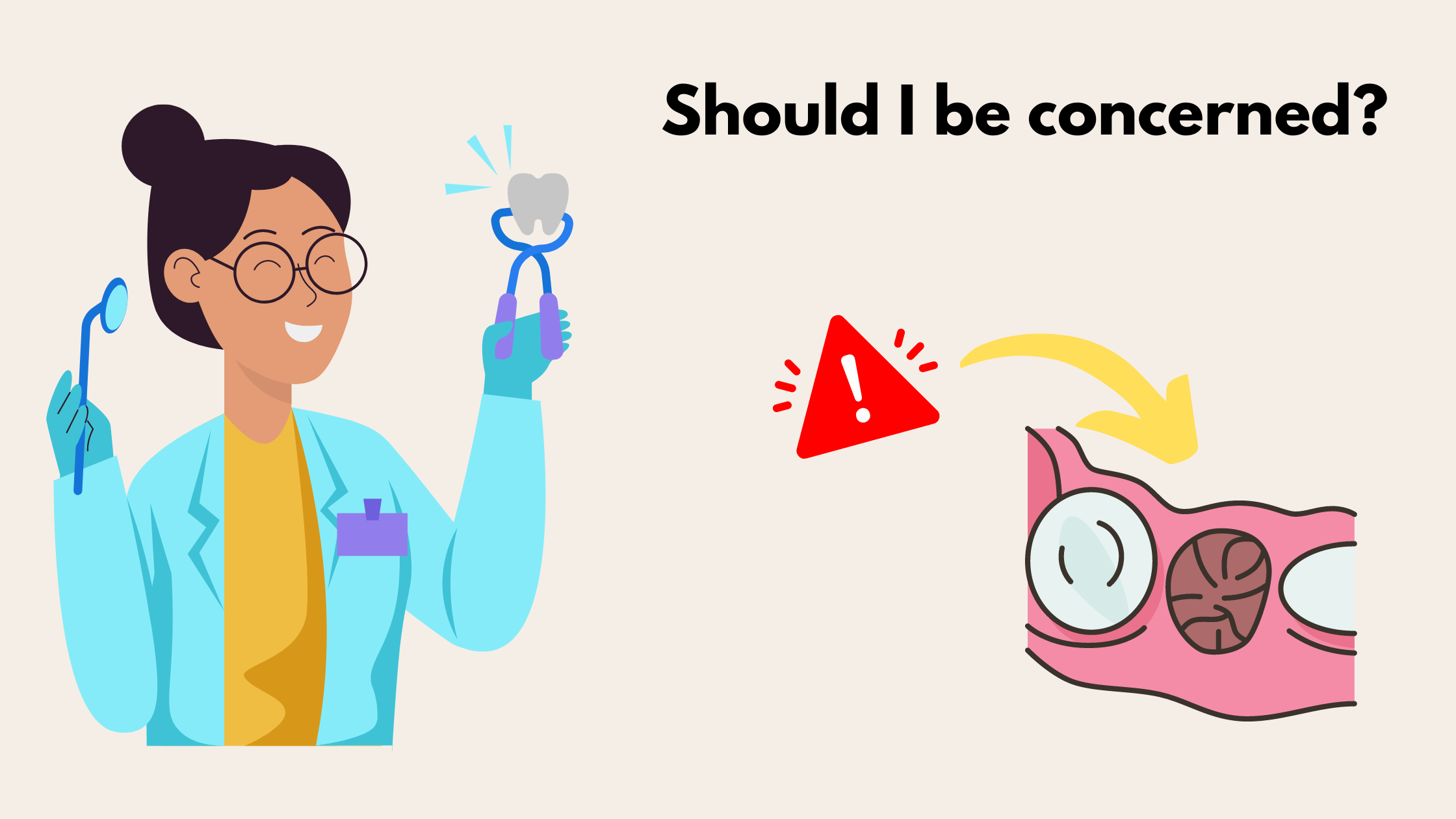
Noticing a portion of bone coming out with an extracted tooth can be alarming, but rest assured, it's rarely the case. Typically, it's a minor issue that resolves naturally during the healing process.
However, extensive damage involving a substantial portion of the jawbone is a more serious situation, requiring immediate care.
In this article, we will explain a fairly common complication during tooth extraction: when a piece of bone breaks off or comes out with the tooth.
However, extensive damage involving a substantial portion of the jawbone is a more serious situation, requiring immediate care.
In this article, we will explain a fairly common complication during tooth extraction: when a piece of bone breaks off or comes out with the tooth.
In this article:
1. What Exactly Does It Mean When a Piece of Bone Comes Off During Tooth Extraction?
2. Should I Be Concerned If Bone Comes Out With My Tooth During an Extraction?
3. Are Jaw Injuries Common During Tooth Extractions?
4. What may Cause the Bone to Come Out During the Extraction Procedure?
5. What are the possible complications?
6. How Can the Dentist Manage the Situation?
What Exactly Does It Mean When a Piece of Bone Comes Off During Tooth Extraction?
One of the most common complications during a tooth extraction is damage to the bone that supports the tooth. This can happen when a small piece of bone breaks off or comes out along with the tooth.Most of the time, it is a minor issue that is not as bad as it seems.
To better understand what this means, you need to know that your jawbone is made up of two parts: the alveolar bone and the basal bone.
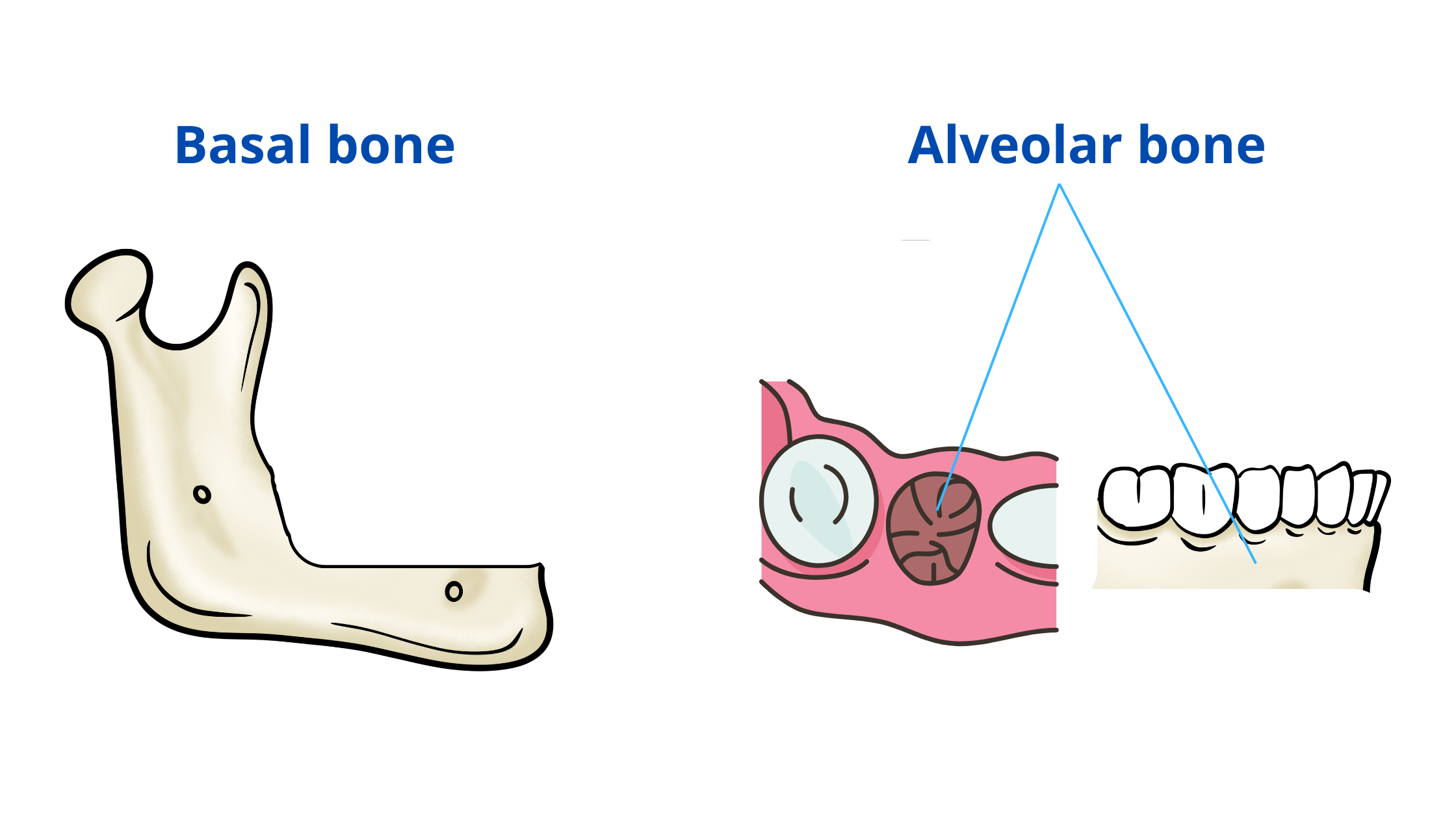
1. Alveolar Bone or Tooth Socket
The alveolar bone, or tooth socket, is the part that surrounds and supports your teeth. It holds each tooth in place through tiny ligaments.2. Basal Bone
The basal bone is the deeper part of the jaw that doesn’t directly support your teeth.A more serious (and rare) situation is when the damage extends beyond the tooth socket into the basal bone. This is likely to happen with lower wisdom teeth extractions since these teeth often have unusual shapes and positions, which makes removing them more complicated.
If the basal bone is fractured, it must be treated properly, as it can lead to severe complications.
What does it look like?
It presents as a piece of broken bone, or a fragment attached to the roots when the tooth is removed (as shown in the picture below). This usually isn’t a big problem, and the area should heal just fine (with proper care).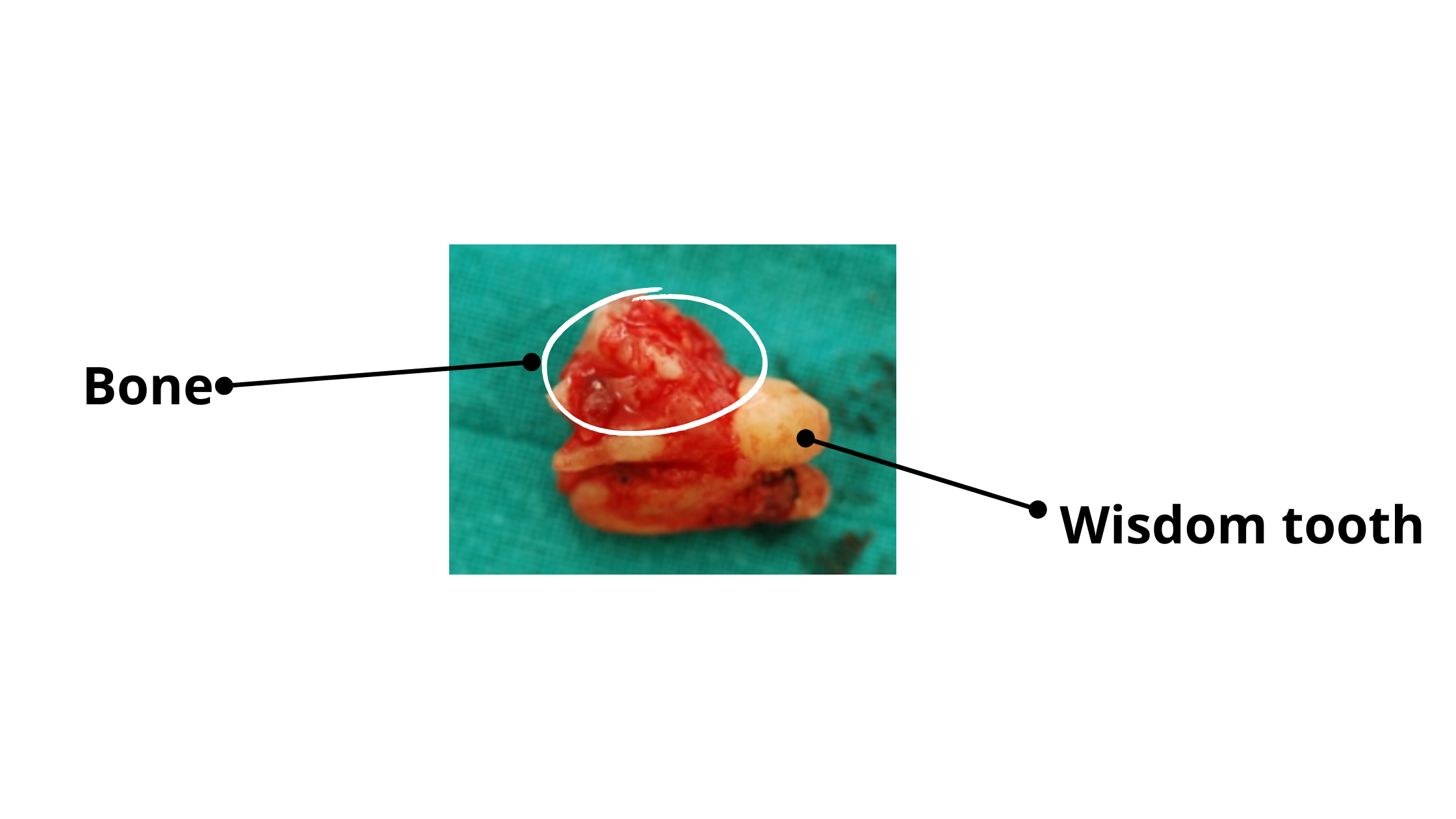
Should I Be Concerned If Bone Comes Out With My Tooth During an Extraction?
During a tooth extraction, your dentist gently loosens the tooth by breaking the ligaments that hold it in place. Although it’s not very common, sometimes a small piece of bone can come out with the tooth, especially if the bone is thin or has been weakened by an infection or gum disease.Most of the time, it’s just a tiny piece of the alveolar bone. Since this part of the bone is thinner and more fragile than the deeper basal bone, it’s more likely to break.
In most cases, this isn’t a big deal. The area will heal on its own, and new bone will fill in the space left.
The only situation where losing bone during an extraction can be a problem is if you plan to get a dental implant later. In that case, you might need a bone graft before implant placement
Less commonly, a larger piece of the alveolar bone that supports multiple teeth may break. This can make the nearby teeth feel loose or unstable. The dentist can often reposition and stabilize this segment to help it heal and reconnect with the jawbone.
The rarest — and most serious — situation is when the basal bone is damaged or fractured during extraction. Extensive damage to the jawbone can cause long-term problems like bite issues, trouble chewing, changes to your facial appearance, infections, tooth loss, or joint issues.
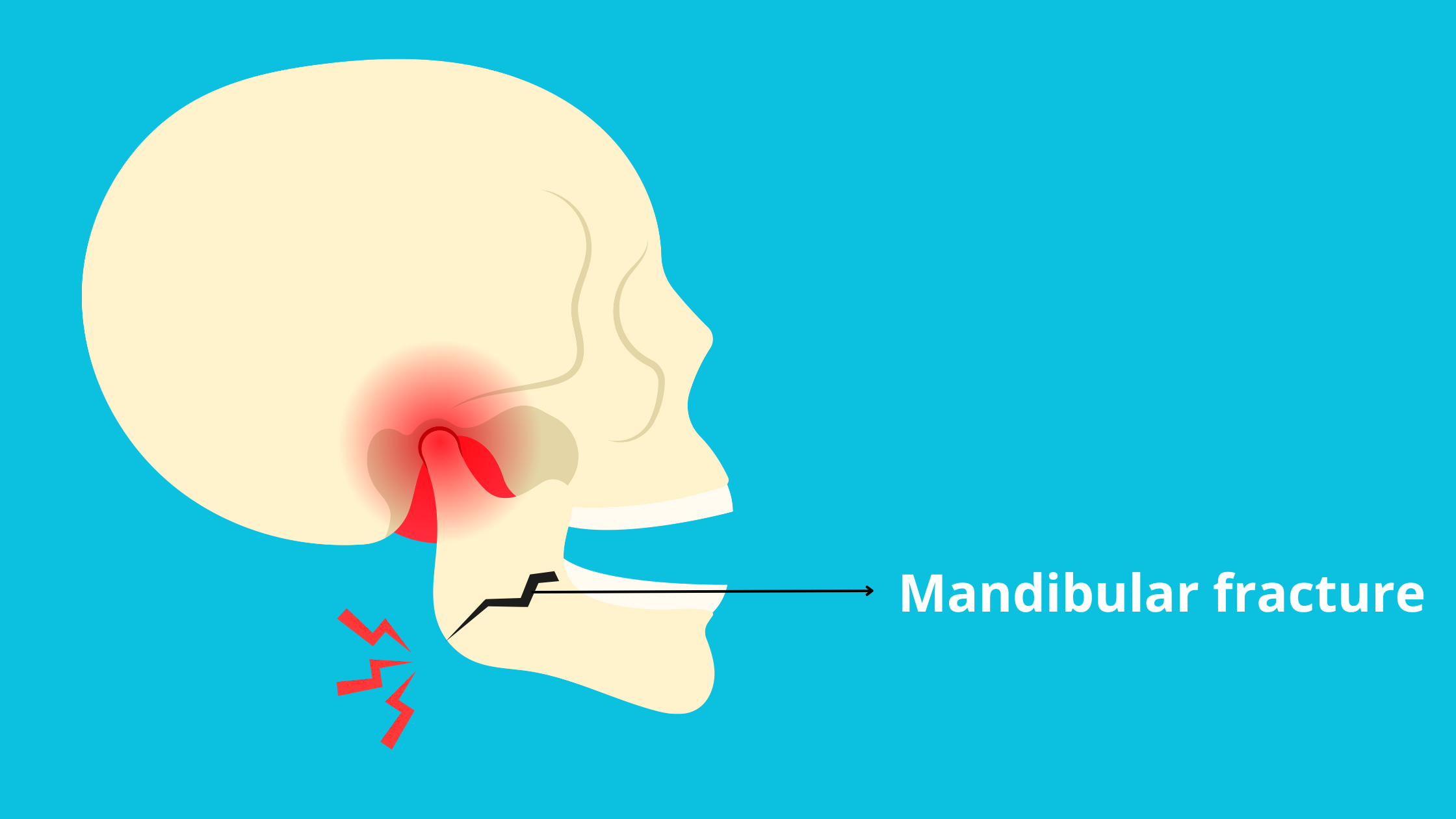
Are Jaw Injuries Common During Tooth Extractions?
Fortunately, serious jaw fractures or major bone injuries during a tooth extraction are very rare.For example, the risk of fracturing the lower jaw after wisdom tooth removal is extremely low. Studies estimate it happens in only about 0.0033% to 0.0049% of cases. If it does occur, it can happen during the procedure or even a few weeks afterward.
Fractures of the upper jaw can happen too, especially in the area behind the upper wisdom teeth (known as the maxillary tuberosity). This area is close to your sinus cavities, so a fracture here can sometimes create an opening between your mouth and sinus. If left untreated, this can lead to sinus problems like sinusitis (a sinus infection).
What may Cause the Bone to Come Out During the Extraction Procedure?
Many factors can contribute to the risk, including:Excessive forces used to remove the tooth:
The dentist uses gentle back-and-forth and rotating movements to loosen the tooth. But if these forces are too much for the bone to handle, a fracture can result. This is especially true if the bone is already weakened by conditions like infection or cysts.
The procedure was challenging:
Bone breakage is more likely during complex extractions. That’s because these procedures often involve drilling and removing some bone to reach the tooth, which can make the bone weaker.
The tooth is deeply impacted or ankylosed:
Teeth deeply embedded in the jawbone (impacted) or fused directly to it (ankylosis) can increase the risk of bone complications during extraction.
- Impacted teeth: When a tooth is deeply impacted, the dentist may need to remove a larger amount of bone to extract it. Sometimes, this can cause a small piece of bone to break off, but this usually doesn’t lead to any serious issues.
- Dental Ankylosis: Ankylosed teeth are also harder to extract than normal teeth. Removing them often requires trimming or cutting away some of the surrounding bone through a minor surgical procedure.
Age and medical conditions
Bone density decreases with age, including in the jaws. As a result, the jawbones become less resistant and can break under excessive force.
Additionally, medical conditions such as osteoporosis can weaken the bones, making them more susceptible to damage during tooth extraction.
What are the Possible Complications?
If bone damage during extraction is properly managed, the following complications are less likely to occur. However, it's essential to keep them in mind so you can act promptly if they arise.Loss of Jawbone Structure
If a significant portion of the bone is broken without successful healing, it can result in the loss of jawbone structure. Bone loss can affect your facial features and may present challenges later, especially if you plan to replace the missing tooth with an implant.
Uneven Bone Contour
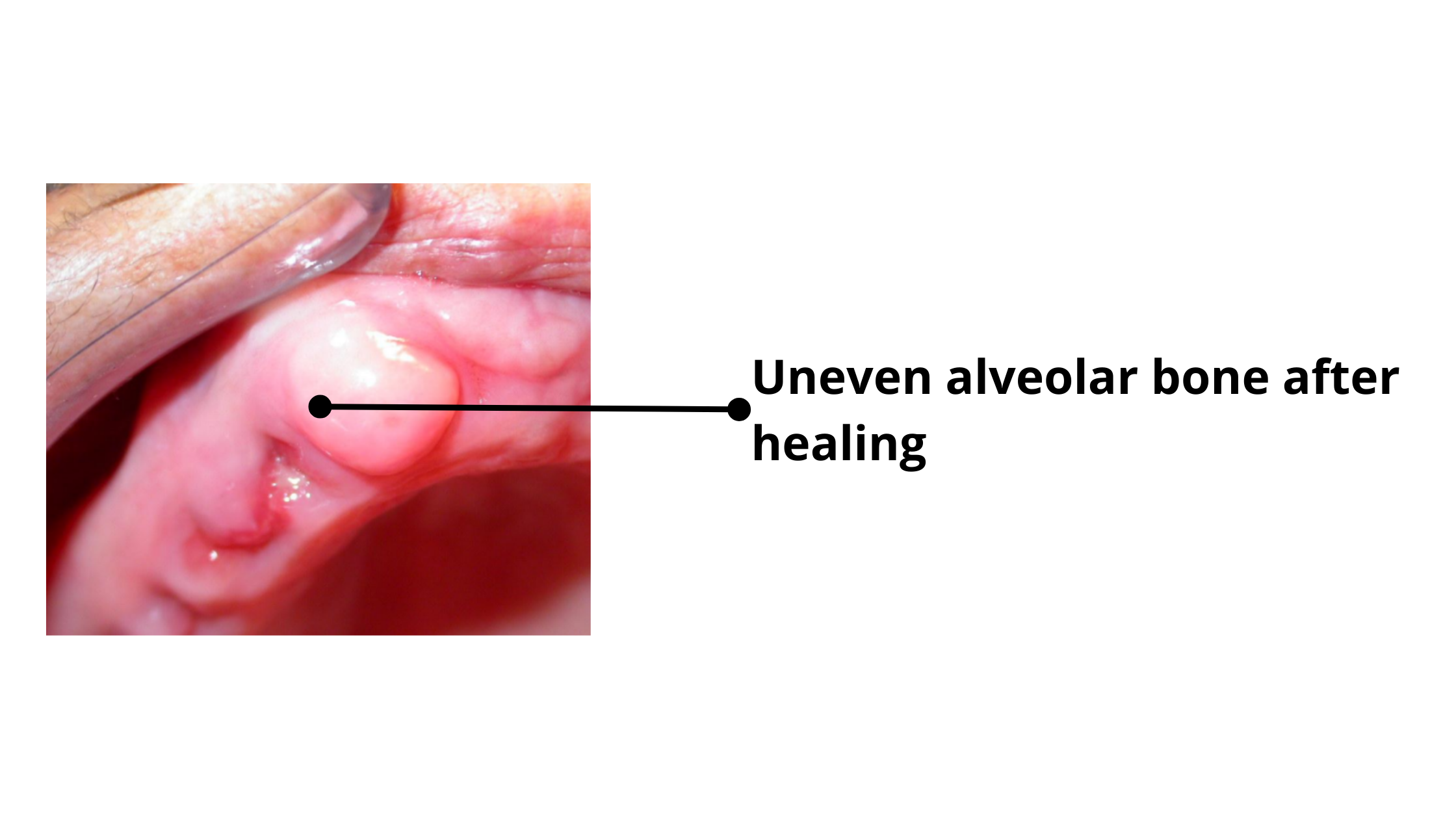
Damage to the bone during or after the procedure may cause it to lose its natural shape, resulting in an irregular form as it heals. This can also interfere with future dental work, such as getting a dental bridge or denture.
Bone Spur
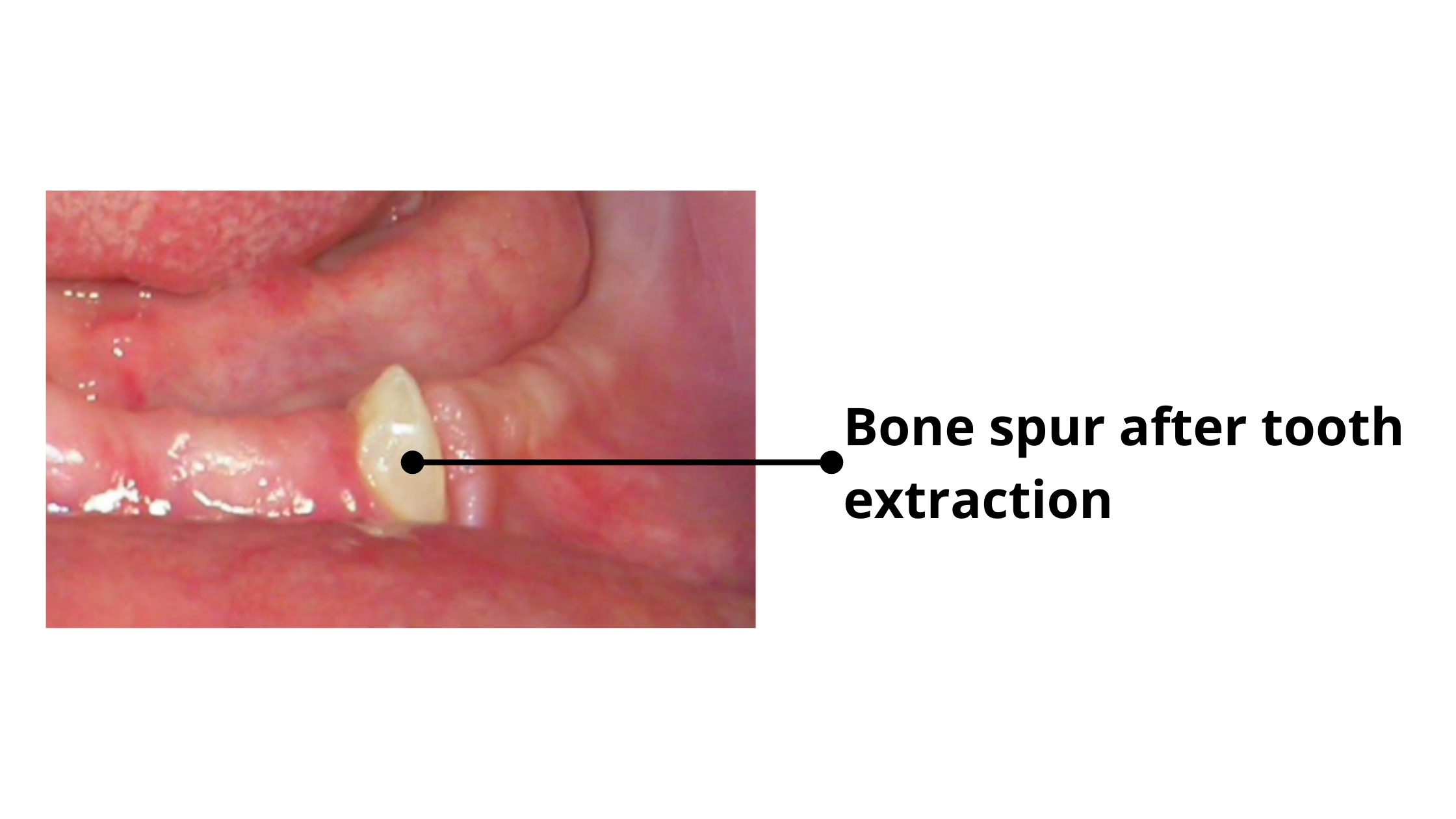
Bone damage during the procedure can leave fragments in the socket. As the healing progresses, the body will expel the unwanted dead bone toward the gum, forming a protrusion known as a bone spur.
Infection
Leaving a bone fragment inside the socket can lead to infection. The dead tissue can become a breeding ground for bacteria, leading to symptoms like redness, swelling, pain, and pus discharge.
Extensive damage can also affect nearby structures. For instance, bone damage in the upper back teeth can affect the overlying sinuses, potentially causing sinusitis.
How Can the Dentist Manage the Situation?
If a piece of bone comes loose or breaks during a tooth extraction, the dentist’s first step is to remove the broken fragment. The loose bone fragment is already dead, and leaving it behind could slow down healing or cause an infection in the socket (known as alveolitis).Next, the dentist will clean the socket and smooth any sharp edges of the bone. This helps prevent painful spurs or rough spots that could injure the gums later.
Once that’s done, the dentist will stitch the gum back together to protect the area and help it heal properly.
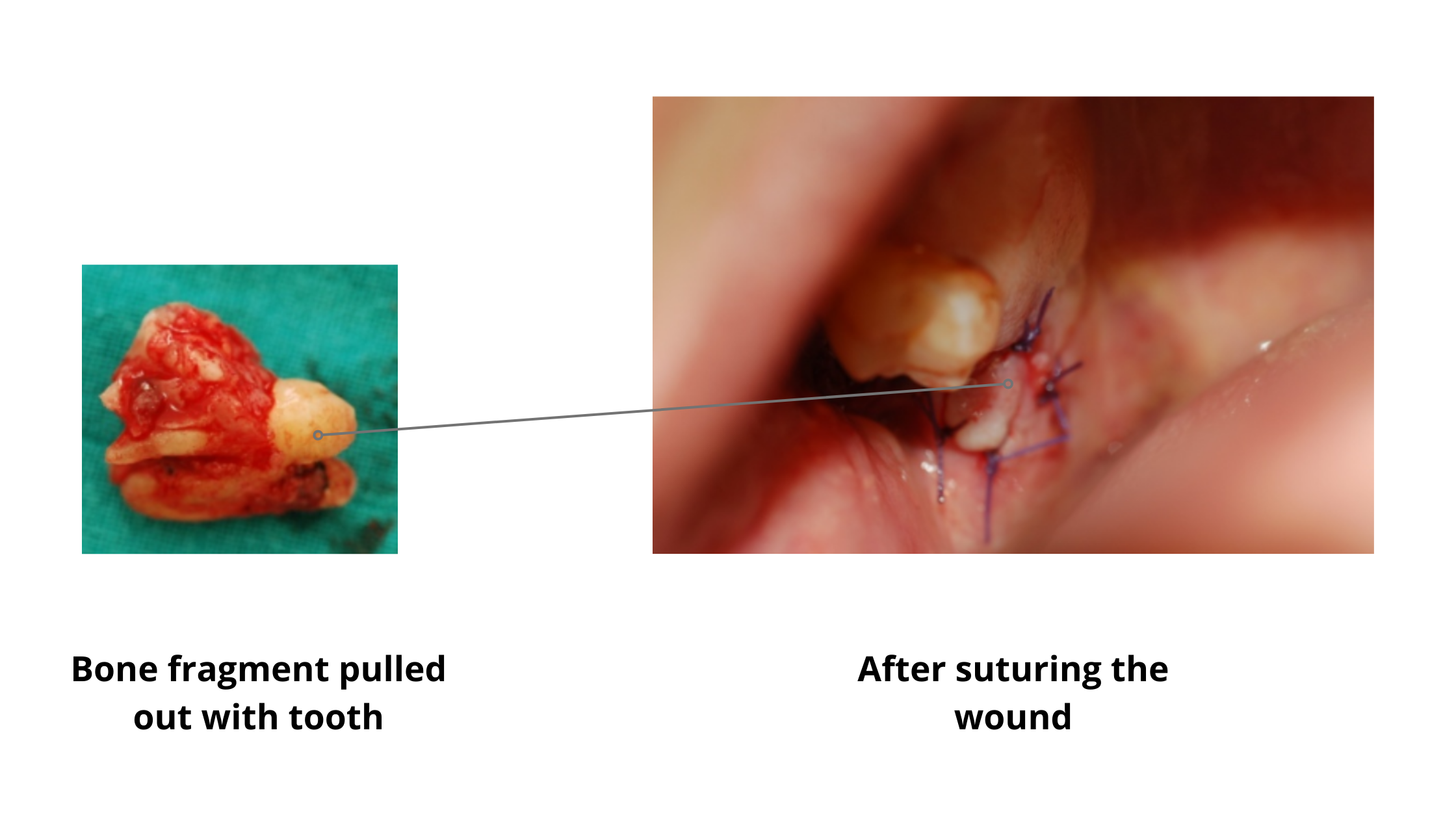
In some cases, if a larger piece of bone breaks but is still attached to the gum, the dentist may try to reposition and stabilize it. This allows the bone to heal and fuse back in place. If so, the tooth extraction might be delayed until the bone has healed completely.
But if the fragment is too small, too loose, or can’t be stabilized, it may need to be removed to avoid infection.
If the fracture extends to the deeper basal bone, this is more serious and often needs treatment from a specialist, like a maxillofacial surgeon. In this situation, the broken jaw segments may need to be repositioned and held in place with plates and screws.
No matter the treatment, it’s important to follow your dentist’s or surgeon’s aftercare instructions closely. This includes taking any prescribed medications, keeping the area clean, and sticking to a soft diet for about a week to ensure smooth, comfortable healing.
- Dentoalveolar fracture: A complication of extraction of upper left first molar - PMC (nih.gov)
- Prevalence of intraoperative and postoperative iatrogenic mandibular fractures after lower third molar extraction: A systematic review - PMC (nih.gov)
- Intraoperative accidents associated with surgical removal of third molars (bvsalud.org)